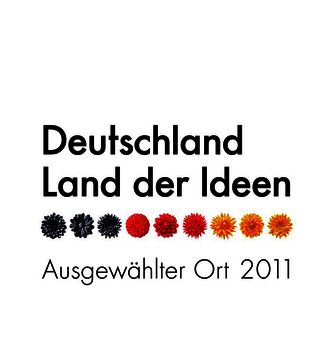One Health approach and infection control for colistin-resistant Escherichia coli in China
Jiancong Wang 11 Chair of Model-Based Environmental Exposure Science, Faculty of Medicine, University of Augsburg, Augsburg, Germany
Letter to the editor
There is a limited amount of literature available regarding the One Health approach in China, specifically in relation to controlling infections caused by colistin-resistant Escherichia (E.) coli. Antimicrobial resistance is a growing global health concern that not only affects human health but also animal health through the biological food chain cycle. This paper aims to provide a comprehensive overview of the current status of colistin-resistant E. coli for food and poultry in China.
As growth promoter, the use of colistin in agriculture has been identified as a key driver of the emergence and spread of colistin-resistant bacteria in food and animals. Evidence shows that a substantial rise in the prevalence of colistin-resistant E. coli among food isolates from 2015 to 2017 in China [1]. Liu et al.[2] reported 15% of 523 raw meat samples were tested positive for colistin-resistant E. coli. The spread of colistin-resistant bacteria poses a threat to health beyond individual as these bacteria have the potential to spread from person to person, or from animals to humans, and transfer their resistance genes, making them difficult to treat with antibiotics [3]. There is evidence indicating the emergence of a new mobile colistin resistance gene in Enterobacteriaceae in China, which has been attributed to the overuse of antibiotics in both human medicine and agriculture [2], [4].
From a One Health perspective, farmers may not be aware of the risks associated with administering colistin to their poultry and the potential for the resistance. Another possibility is that farmers may not have a complete understanding of the implications of antibiotic resistance and the link between the use of antibiotics in agriculture and the development of resistance in both animals and humans [5]. Collaboration and engagement from multiple stakeholders are necessary for improving awareness and education regarding the risks associated with antibiotic use in agriculture [6]. Several strategies, such as improved regulation, education campaigns, and alternative methods to antibiotics in agriculture, may play a vital role in reducing the risk of antibiotic resistance.
In China, the challenges of conducting active surveillance for colistin-resistant E. coli in food and poultry are further complicated by the lack of standardization in testing methods [7]. This issue is particularly prevalent in rural areas, where most of the poultry production takes place. Additionally, the absence of a mandatory reporting system for antimicrobial resistance in food and agriculture further exacerbates the situation. Identifying colistin-resistant E. coli is just the beginning; however, the complex supply chain and distribution networks of food and poultry products pose a challenge in tracing the origin and spread of these bacteria. Compounding this issue is the presence of many asymptomatic carriers of resistant strains, making detection and control of their spread difficult. Enhancing active surveillance for antimicrobial resistance in food and poultry is crucial for mitigating the risk of antibiotic resistance.
The successful infection control measures implemented in the Netherlands and Canada to control the use of colistin and reduce the prevalence of colistin-resistant E. coli in food and poultry are worth learning from. The Netherlands has implemented a policy of “prudent use” of antibiotics in animal production to reduce antibiotic use in animal husbandry and prevent the development of antibiotic resistance [8]. Additionally, the use of a probiotic feed additive containing lactobacilli has been found to reduce colistin-resistant E. coli in broiler chickens and has been implemented as a control measure. Furthermore, Canada’s One Health approach, led by the Canadian Integrated Program for Antimicrobial Resistance Surveillance (CIPARS), monitors antimicrobial resistance in food, animals, and humans. CIPARS has implemented strict regulations and education programs to promote responsible antibiotic use among farmers, veterinarians, and the public. This approach has successfully reduced the prevalence of colistin-resistant E. coli in food and poultry through evidence-based policy and decision-making [9].
The first step that China should take in addressing the issue of colistin-resistant E. coli in food and poultry is to establish a comprehensive and integrated surveillance system to monitor the prevalence of antimicrobial resistance in the food chain. This should involve regular testing of food products and live animals, as well as environmental samples from farms and processing facilities. Secondly, it should work to reduce the use of antibiotics, including colistin, in agriculture. This can be achieved through the development and implementation of national policies and regulations that promote responsible use of antibiotics, as well as the adoption of alternative strategies such as improved biosecurity measures. Another important step is to increase awareness and education among farmers, veterinarians, and other stakeholders about the risks associated with the use of antibiotics in food and poultry production, and the importance of responsible use. This can be achieved through targeted education and outreach programs, as well as through collaboration with industry associations and other stakeholders. Finally, it should promote a One Health approach to addressing antimicrobial resistance, involving collaboration between human health, animal health, and environmental health sectors. This can help to ensure that interventions are comprehensive, coordinated, and effective in reducing the spread of antimicrobial resistance. Overall, a combination of regulatory, educational, and collaborative approaches will be needed to effectively address the issue of colistin-resistant E. coli in food and poultry in China.
Notes
Competing interests
The authors declare that they have no competing interests.
Funding
None.
Author’s ORCID
References
[1] Liu X, Geng S, Chan EW, Chen S. Increased prevalence of Escherichia coli strains from food carrying bla (NDM) and mcr-1-bearing plasmids that structurally resemble those of clinical strains, China, 2015 to 2017. Euro Surveill. 2019 Mar;24:1800113. DOI: 10.2807/1560-7917.Es.2019.24.13.1800113[2] Liu YY, Wang Y, Walsh TR, Yi LX, Zhang R, Spencer J, Doi Y, Tian G, Dong B, Huang X, Yu LF, Gu D, Ren H, Chen X, Lv L, He D, Zhou H, Liang Z, Liu JH, Shen J. Emergence of plasmid-mediated colistin resistance mechanism MCR-1 in animals and human beings in China: a microbiological and molecular biological study. Lancet Infect Dis. 2016 Feb;16(2):161-8. DOI: 10.1016/S1473-3099(15)00424-7
[3] Argudín MA, Deplano A, Meghraoui A, Dodémont M, Heinrichs A, Denis O, Nonhoff C, Roisin S. Bacteria from Animals as a Pool of Antimicrobial Resistance Genes. Antibiotics (Basel). 2017 Jun;6(2):. DOI: 10.3390/antibiotics6020012
[4] Wang X, Wang Y, Zhou Y, Li J, Yin W, Wang S, Zhang S, Shen J, Shen Z, Wang Y. Emergence of a novel mobile colistin resistance gene, mcr-8, in NDM-producing Klebsiella pneumoniae. Emerg Microbes Infect. 2018 Jul;7(1):122. DOI: 10.1038/s41426-018-0124-z
[5] Lei T, Tian W, He L, Huang XH, Sun YX, Deng YT, Sun Y, Lv DH, Wu CM, Huang LZ, Shen JZ, Liu JH. Antimicrobial resistance in Escherichia coli isolates from food animals, animal food products and companion animals in China. Vet Microbiol. 2010 Nov;146(1-2):85-9. DOI: 10.1016/j.vetmic.2010.04.025
[6] Coyne LA, Latham SM, Williams NJ, Dawson S, Donald IJ, Pearson RB, Smith RF, Pinchbeck GL. Understanding the culture of antimicrobial prescribing in agriculture: a qualitative study of UK pig veterinary surgeons. J Antimicrob Chemother. 2016 Nov;71(11):3300-3312. DOI: 10.1093/jac/dkw300
[7] Song Y, Yu L, Zhang Y, Dai Y, Wang P, Feng C, Liu M, Sun S, Xie Z, Wang F. Prevalence and characteristics of multidrug-resistant mcr-1-positive Escherichia coli isolates from broiler chickens in Tai'an, China. Poult Sci. 2020 Feb;99(2):1117-1123. DOI: 10.1016/j.psj.2019.10.044
[8] Speksnijder DC, Mevius DJ, Bruschke CJ, Wagenaar JA. Reduction of veterinary antimicrobial use in the Netherlands. The Dutch success model. Zoonoses Public Health. 2015 Apr;62 Suppl 1:79-87. DOI: 10.1111/zph.12167
[9] Government of Canada. Canadian Integrated Program for Antimicrobial Resistance Surveillance (CIPARS). 2023 [last accessed on 2025 Jul 11]. Available from: https://www.canada.ca/en/public-health/services/publications/drugs-health-products/canadian-integrated-program-antimicrobial-resistance-surveillance-2023-key-integrated-findings.html




